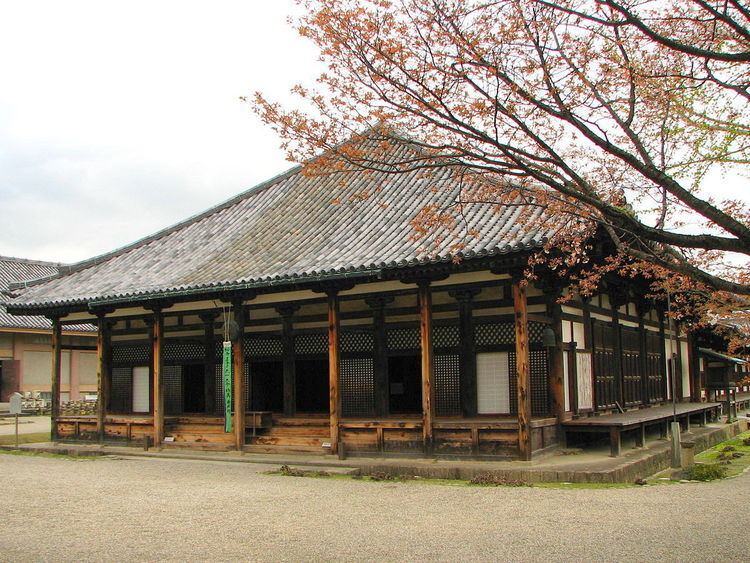Affiliation Shingon-Ritsu Phone +81 742-23-1377 | Deity Chikō Mandala Completed 593 | |
 | ||
Address Japan, 〒630-8392 Nara Prefecture, Nara, 中院町11番地 Similar Kōfuku‑ji, Yakushi‑ji, Tōshōdai‑ji, Tōdai‑ji, Kasuga‑taisha | ||
Gango ji temple
Gangō-ji (元興寺) is an ancient Buddhist temple, that was once one of the powerful Seven Great Temples, in Nara, Japan.
Contents
History
The original foundation of the temple was by Soga no Umako in Asuka, as Asuka-dera. The temple was moved to Nara in 718, following the capital relocation to Heijō-kyō.
Gangō-ji initially held as many as seven halls and pagodas in its precincts, which occupied a wide area within what is now Naramachi, the preserved district of modern Nara city. The original architecture was however, lost over time and notably in fires during the 15th through 19th centuries (Muromachi and Edo periods respectively).
Architecture
The best preserved part of the temple is known as Gangō-ji Gokurakubō (元興寺極楽坊) and belongs to the Shingon-risshū school. This site is a part of a group of temples, shrines and other places in Nara that UNESCO has designated as World Heritage Site "Historic Monuments of Ancient Nara", and holds three national treasures:
Most of the destroyed complex ground has been altered and melded with parts of Naramachi over the course of time. Another small part of the temple remains today as the other Gangō-ji, of a Kegon school but with few remainders in terms of architecture.
Gangō-ji in the Man'yōshū
The Man'yōshū includes a poem attributed to a monk of Gango-ji. This poet laments that, having attained enlightenment, his greater understanding remains unnoticed by others in the streets of Nara. His poem may perhaps bemoan his undervalued condition—and yet, in a modest way, his words transport contemporary readers momentarily back to share his quiet, 8th century perspective:
